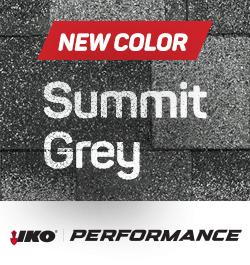Is Your Home Ready for Another 2020 Hurricane

By Rob White, GCP Applied Technologies.
Here are four ways to make sure your home is prepared to face the storm.
The 2020 Atlantic hurricane season has been an extremely active one so far, and it doesn’t end until November 30. That means there is the potential for more storms to make landfall this year. It’s more important than ever that you plan to address hazards such as flooding, storm surges, high winds and tornadoes, all with keeping COVID-19 safety guidelines in mind.
So, how do homeowners residing in vulnerable areas best prepare their homes to seal out hurricane damage this season? The first piece of good news is that building product companies are on top of it, continuing to innovate and manufacture new products that can help keep people and their homes safe during extreme weather. The second piece of good news is that there are simple steps that can be taken to reduce a home’s risk of damage before a hurricane or any intense storm hits:
It is essential that you take action before a storm, not after. Here are four steps to follow:
-
Inspect - Look for potential problems on the roof. Loose or curled shingles, broken or missing tiles all warrant repair. Also inspect the flashing, drainage system, and accessories such as vents and skylights. Ask a trained roofing professional if additional reinforcements to the roof structure such as additional fasteners or hurricane clips are required.
Beyond the roof, a home’s doors and windows can also become major leak zones. Even if the windows and doors are well shuttered, wind-driven rain can be blown into the house at these points, especially if they have not been properly flashed and weatherproofed. The following are some signs of water damage:
- Leaks or breaks in seams around window trim and sills.
- Uneven door frames.
- Discolored plasterboard.
- Peeling wallpaper.
- Chipped or cracked stucco finishes.
- Mold, mildew, or rot in the walls, insulation, and/or electrical systems.
- Missing, cracked, or blistered paint inside the home.
-
Examine Warranties - There are two main types of warranties to take a look at before making repairs: the workmanship warranty & the manufacturer’s material warranty. Having both types of warranties can provide you with comprehensive coverage. A workmanship warranty covers the work performed by the contractor including any installation errors. A material warranty promises that the manufacturer properly constructed the product. For example, if repairs need to be made on a roof, take a look at the material warranty for the products used to build the roof, such as the shingles and roofing underlayment. If defects or early deterioration of the materials are discovered, confirm if they are still covered.
-
Use the Right Products - If repairs are needed, don’t skimp on quality to save a few cents. Much of the damage associated with hurricanes and other serious storms result from water entering the home when roof coverings or siding is blown off. This is why it is imperative that you have a secondary layer of waterproofing protection underneath the shingles and siding. If proper protection measures are not taken, the resulting leaks are the main cause of interior damage, as well as potential causes of rot and mold. Rot and mold can lead to major structural damage and even potential health problems for homeowners.
Roof: The Federal Emergency Management Agency (FEMA) has published recommendations for the use of fully-adhered roofing underlayments as an enhanced secondary water barrier for homes in both coastal and inland hurricane-prone areas. For over 40 years, contractors have relied on GRACE ICE & WATER SHIELD® fully-adhered roofing underlayment from GCP Applied Technologies to provide quality protection. GRACE ICE & WATER SHIELD® self-adhered roofing underlayment provides premium performance as it seals to itself at overlaps, seals to the roof deck, and most importantly, seals around the fasteners used to attach the shingles, helping prevent water from leaking into your home. In the event roof coverings are blown off or water manages to get underneath your shingles, these underlayments are the key to preventing water infiltration.
Windows, Doors and More: Flexible flashings such as GCP Applied Technologies’ VYCOR® PLUS and VYCOR® PRO self-adhered flashings can be used to seal windows, doors, corners, and other non-roof detail areas. These products are designed to form a watertight and airtight seal with building materials; thus protecting your home from water damage and air infiltration. Wind uplift can also impact the siding. Therefore, it is important that a proper weather-resistive barrier (WRB) is installed underneath the siding. Self-adhered WRB, such as VYCOR® enV-S™ membrane, represent an advanced alternative to house wraps. VYCOR® enV-S™ product seals to the sheathing, seals to itself at overlaps, and seals around the numerous fasteners used to attach the wall covering, providing an important layer of protection not only during the hurricane season but all year round.
- Find a Pro - Identify reliable, knowledgeable professionals that can perform work safely. It’s usually best that all inspections, maintenance and repairs are completed by trained and experienced people. You should demand that they use high-quality materials. The amount of money you can save by selecting less expensive lower quality products is insignificant compared to the damage caused by water infiltration.
By finding a trusted building professional and carefully examining the roof, walls, and detail areas of a home you will ensure a more water- and weather-tight home, providing peace of mind this hurricane season.
Learn more about GCP Applied Technologies in their RoofersCoffeeShop® Directory.
Original article source: GCP Applied Technologies





















Comments
Leave a Reply
Have an account? Login to leave a comment!
Sign In